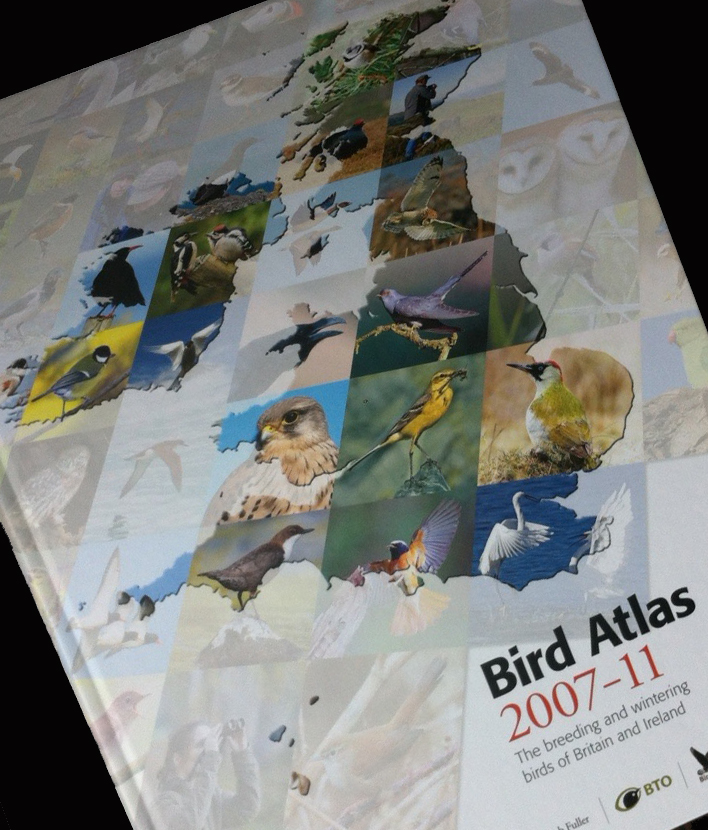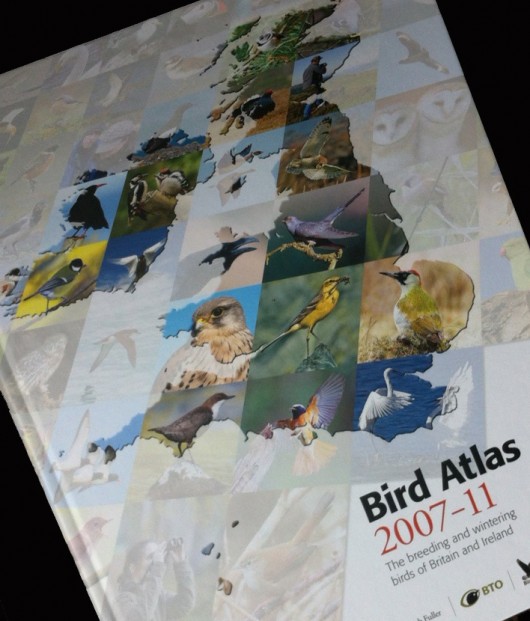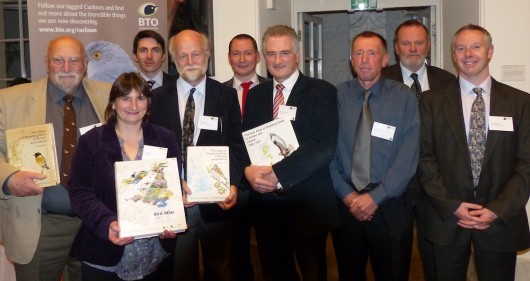 A personal view of the #birdatlas project by the lead organiser and author.
A personal view of the #birdatlas project by the lead organiser and author.
When I joined the BTO staff in November 1992 as a Research Officer in the Census Unit, David Gibbons was upstairs busy working on the ‘New Atlas’- collating species accounts, analysing data and writing chapters. I say he was upstairs, I honestly don’t remember seeing him much. When the ‘New Atlas’ was published in 1994, I was proud to have contributed some records from my patch around Pontesbury in Shropshire and was especially pleased to see ‘my dot’ for Quail which I had recorded on the outskirts of the village. I’ve been birdwatching from a young age and started my first notebook when I was 6. I’ve kept notes ever since and they serve as a wonderful diary. Recording is in my blood.
I’ve enjoyed a varied career at BTO from drawing circles on maps, counting waders in Cardiff Bay and organising the constant effort ringing scheme. When the post of Atlas Coordinator was advertised I was partway through maternity leave, but it was a once in a lifetime opportunity and I had to apply. The post combined my passion for recording, birds (of course!) and working with volunteers. I was delighted to be offered the job – but what a task ahead!
It’s been a privilege working on the Bird Atlas for the last six and a half years, working alongside thousands of volunteer observers, dedicated Regional Organisers and a brilliant Atlas Team. My co-authors Simon Gillings, Brian Caffrey, Bob Swann, Iain Downie and Rob Fuller have all worked on the project from the start (with Rob getting the cogs moving as early as 2004). They are all outstanding. Of course, the Bird Atlas project involved many staff at BTO, and without the sterling efforts of the Fundraising Team who raised over £1.4 million there would never have been an Atlas.
Over four winters and four summers we all worked hard to get all the squares covered, working out how to reach offshore islands and cover areas with no volunteers (much of western Scotland). Ireland was a particular challenge with volunteers living in just 44% of the 10-km squares in the island. Volunteers pulled out all the stops to get their local areas covered with many venturing much further afield when their patch was well covered. Achieving such comprehensive coverage was one of the most satisfying parts of the job. The commitment and enthusiasm shown by volunteers often amazed me. Thank you.
Following the completion of the fieldwork in late summer 2011, the Regional Organisers and teams of local experts worked tirelessly to check all 20 million records submitted to the Atlas. This was an enormous task and certainly one of the most challenging aspects of the Atlas and took until the middle of 2012 before all the records were validated. Even when we thought the task was done there was checking and re-checking over the following months. Alongside the validation, we were drafting the 296 species accounts, drafting chapters, thinking about layout and design. The period up to August 2013, by which time we had delivered all the text and graphics to the designers, was hectic to say the least. Now I know why I rarely saw David Gibbons whilst he was writing up!
xxxxxx
40,000 volunteers
20 million records
99.005% coverage
296 species
720 pages
3.5kg!
xxxxxx
It was exciting to receive the proofs in early September 2013, but nothing quite prepared me for the arrival of the first box of atlases on 12 November 2013. Six and a half years after starting work on the Bird Atlas and here it was. I got quite emotional opening that first box with Simon Gillings and Jeff Baker . . . and yes, a tear was shed! We had all put so much effort into the project from start to finish, it was hard to believe that the book had been completed. Over the following weeks, it was lovely to receive emails, letters, cards, tweets and phonecalls from volunteers who had taken part in the fieldwork and were proud to have contributed to the Atlas and were delighted with the book.
We held an ‘Atlas celebration’ event at the Royal Society in London on 21 November where we were able to spend the afternoon with just a few of the thousands of people that had made the Bird Atlas possible, including some volunteer BTO Regional Organisers and validators, sponsors of species accounts and journalists. We were able to present some of the key findings of the Bird Atlas to influential data users from government, NGOs and academic researchers. It was also a very rare occasion when all six authors of the Atlas were in the same room together!
Atlas authors past and present, from left to right:
Tim Sharrock (1976 breeding atlas), Dawn Balmer, Brian Caffrey, Peter Lack (1986 winter atlas), Simon Gillings, David Gibbons (1993 breeding atlas), Bob Swann, Rob Fuller and Iain Downie
For me, the role of Atlas Co-ordinator was a dream job and I am immensely proud to have worked with such a brilliant team throughout and to have produced an atlas, which I hope will be used in conservation and research for the next decade and more. Simon Gillings and Rob Fuller are now leading the BTO research using Atlas data, and setting up exciting collaborations, but more of that another time.
Bird Atlas links
Look inside! Bird Atlas sample pages
Buy the Bird Atlas
Review by Mark Avery
A summary of the Bird Atlas on the web and what others have said about the project and book
Beyond the maps
The BTO’s Simon Gillings looks at the use of data and research priorities from Bird Atlas. View
Blog with #theBOUblog
If you want to write about your research in #theBOUblog, then please see here.






